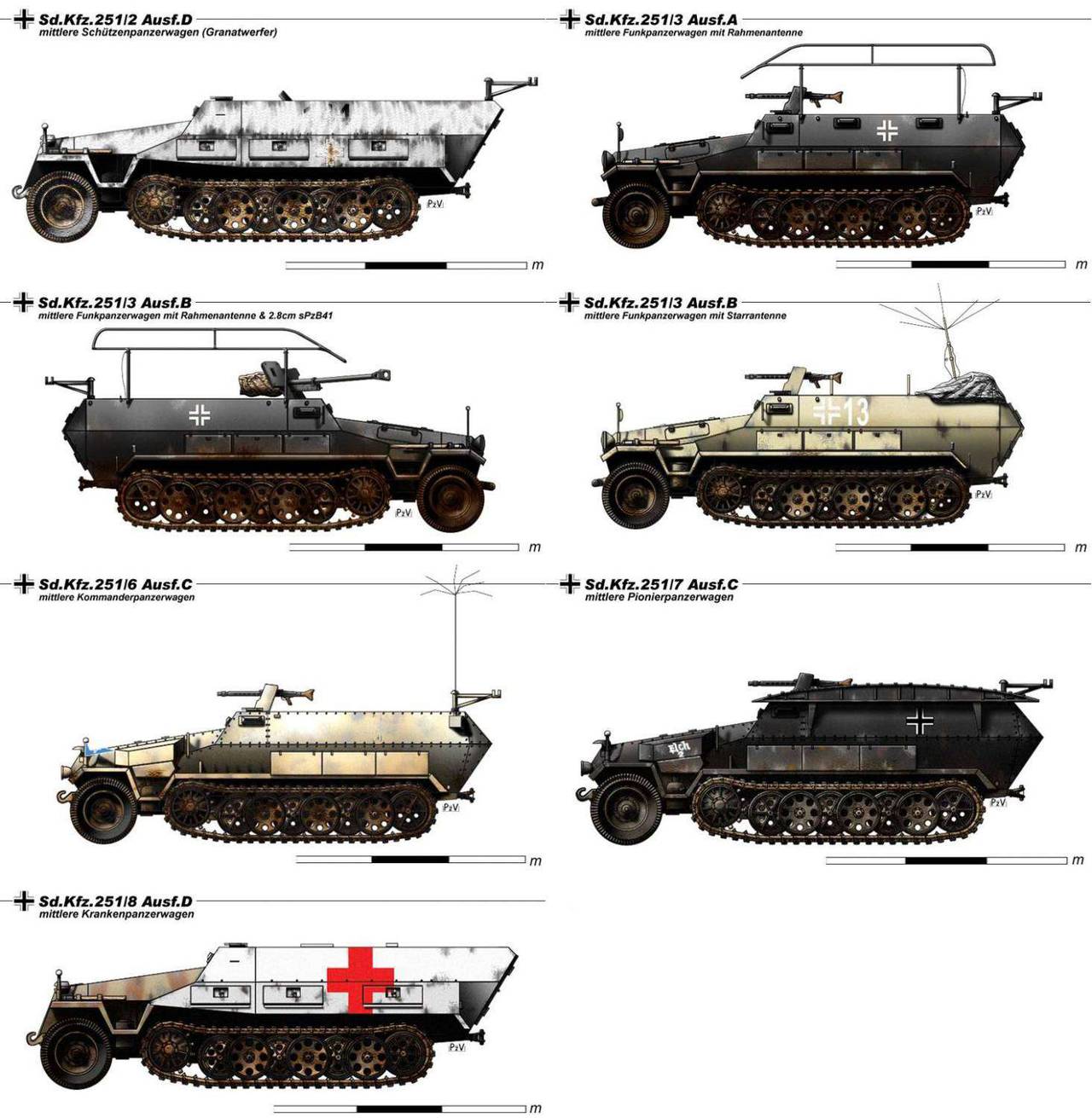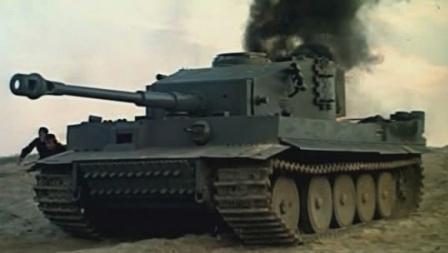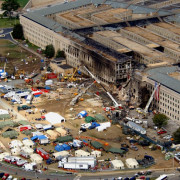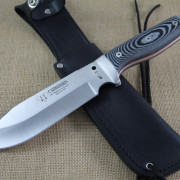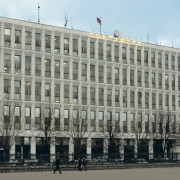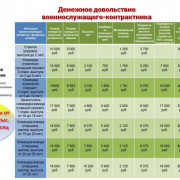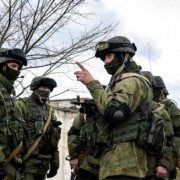North american p-51 mustang
Содержание:
Содержание
Литература
- Ильин В. и др. Истребитель Норт Америкэн «Мустанг». — М.: Техниформ, июль 1996. — 32 с. — (Крылья — дайджест лучших публикаций об авиации. Вып. 5). — 2000 экз.
- Котельников В. Р. Истребитель «Мустанг». «Воздушный кадиллак». — М.: ВЭРО Пресс, Яуза, Эксмо, 2010. — 128 с. — (Война и мы. Авиаколлекция). — ISBN 978-5-699-41773-5.
- Котельников В.Р. Авиационный ленд-лиз. — М.: Фонд «Русские Витязи», 2015. — 368 с. — 1000 экз. — ISBN 985-5-9906036-3-9.
- Харук А.И. Истребители Второй Мировой. Самая полная энциклопедия. — М.: Яуза, ЭКСМО, 2012. — 368 с. — 1500 экз. — ISBN 978-5-699-58917-3.
- P-51 Mustang. — Т. 1. — (Война в воздухе № 39).
- P-51 Mustang. — Т. 2. — (Война в воздухе № 40).
- P-51 Mustang. Техническое описание и боевое применение. — (Война в воздухе № 89).
- Р-51 «Мустанг». — (Война в воздухе № 124).
История
Самолёт был разработан и произведён компанией North American по заказу правительства Великобритании в кратчайшие сроки. Первый прототип NA-73X поднялся в воздух 26 октября 1940 года, спустя всего лишь 117 дней с момента размещения заказа на его производство.
Ранние модификации самолёта снабжались двигателем Allison V-1710, обеспечивавшим прекрасные характеристики при полёте на малой высоте, но совершенно непригодном для полётов на высотах выше 4600 метров.
В апреле 1942 года, по результатам тестов британских испытателей высотные характеристики истребителя были признаны неудовлетворительными, и встал вопрос о его замене другой моделью. Но эксперты были настолько впечатлены его маневренностью и скоростью на малых высотах, что решили пригласить специалистов из компании Rolls-Royce для дальнейших консультаций. В результате этого сотрудничества самолёт стал, в дальнейшем, оснащаться двигателем Rolls-Royce Merlin и его американским аналогом Packard V-1650. Замена двигателя позволила значительно улучшить высотные характеристики истребителя, сохранив все его преимущества при полётах на малой высоте.
Как применять ромашку
История
Самолёт был разработан и произведен компанией North American по заказу правительства Великобритании в кратчайшие сроки. Первый прототип NA-73X поднялся в воздух 26 октября 1940 года, спустя всего лишь 117 дней с момента размещения заказа на его производство.
Ранние модификации самолёта снабжались двигателем Allison V-1710, обеспечивавшим прекрасные характеристики при полёте на малой высоте, но совершенно непригодном для полётов на высотах выше 4600 метров.
В апреле 1942 года, по результатам тестов британских испытателей высотные характеристики истребителя были признаны неудовлетворительными, и встал вопрос о его замене другой моделью. Но эксперты были настолько впечатлены его маневренностью и скоростью на малых высотах, что решили пригласить специалистов из компании Rolls-Royce для дальнейших консультаций. В результате этого сотрудничества самолёт стал, в дальнейшем, оснащаться двигателем Rolls-Royce Merlin и его американским аналогом Packard V-1650. Замена двигателя позволила значительно улучшить высотные характеристики истребителя, сохранив все его преимущества при полётах на малой высоте.
History
Main article: History of the P-51 Mustang
The Rolls-Royce Merlin engine was successfully tested on a P-51 Mustang in late 1942, resulting in production of P-51B Mustangs fitted with the Packard V-1650, a license-produced Merlin. North American Aviation’s (NAA) plant in Inglewood California was maxing out production of the P-51B so a new plant was opened up in Dallas, Texas, in order to increase production. The Mustangs produced in the Dallas plant were designated as the P-51C even though they were identical in all other regards to the P-51B. It was decided during the P-51B and C production run that the aircraft would no longer leave the factory with an olive drab paint, but would instead leave in the unpainted metal finish.
Deliveries of the P-51C to the US Army Air Force (USAAF) began in August 1943, much later than those of the P-51B due to the Dallas plant having been in the process of construction when the P-51B entered production at Inglewood. A total of 1,750 P-51C Mustangs were built by NAA during the war.
P-51B and C Mustangs began arriving in Europe in August and October of 1943, equipping fifteen fighter groups of the 8th and 9th Air Forces in England as well as the 15th Air Force in Italy. P-51C Mustangs, along with their P-51B brethren, were used by the USAAF 8th Air Force to escort B-17 Flying Fortress bombers on daylight raids across the English Channel; the long range of the P-51B/C Mustang made it ideal for that type of mission. The 9th Air Force used them in the fighter-bomber role. In addition to European operations, P-51C Mustangs were used in the China Burma India Theater (CBI). Even by the end of the war many of the P-51s still in service with the USAAF were of the P-51B and C models, not having been fully replaced by the P-51D and K models but instead only supplemented.
In addition to serving with the USAAF, 636 P-51B and C Mustangs were also used by the British Royal Air Force (RAF) during the war, where they were designated as the Mustang Mk III. P-51C Mustangs were also used by the Republic of China Air Force (ROCAF) during the Second World War.
P-51C Variants
Combat Variants: 1,750 built
- P-51C-1-NT — Original production model with V-1650-3 engine; 350 built.
- P-51C-3-NT — Added an 85 gallon fuel tank behind the pilot’s seat; unknown number converted from P-51C-1-NT.
- P-51C-5-NT — Used the more powerful V-1650-7 engine; 450 built.
- P-51C-10-NT — 823 built.
- P-51C-11-NT — 127 built.
Non Combat Variants
- F-6C-NT — Reconnaissance conversion with added cameras, armament retained; 20 converted from P-51C-10-NT.
- TP-51C — Two-seat trainer conversion; 5 converted during WW2, 1 converted in 2000’s.
Конструкция
Usage in battles
Offense
Probably the best assets the P-51D has are its speed, weaponry, and energy retention. In game and in real life the P-51D achieves ideal performance above 7 km; however, even at low altitudes, the P-51 is still incredibly fast. If one climbs at the ideal speed of 250 km/h IAS side climbing is not necessary- a high enough altitude will be achieved by the time the first contact is initiated that the P-51D-30 can simply evade incoming fire and speed away, untouchable.
When an enemy is spotted moving away from the P51-D, enter a mild dive and go for a strafing run. After that, it is important to continue heading in the same direction so the speed is maintained. Doing this, even the most agile fighters won’t be able to turn quickly enough to fire on you. If you miss on your strafe run or have an enemy behind you, you should get at least 2+km from the enemy and then start to turn towards him, depending on his speed. If your speed is under 500 km/h, a bigger distance should be achieved before attempting a turn. This ensures that your turn will be completed before the enemy gets within 1 km distance before you can line up your shot. Head-ons are actually very effective against fragile/lightly gunned vehicles such as the A6M and Spitfire. The high rate of fire and velocity of the 50 cals make long-range sniping very viable.
When engaging enemy bombers, aim for engines and wings. A good burst will rip off wings with ease and/or start several fires.
Defense
Shallow dives and altitude are your friends- at 5.0 there is no vehicle short of an Fw 190 D-13 that can catch a P-51D-30 above 5 km. Furthermore, the P-51D-30 is near untouchable in a dive- careful, however, as planes such as the G.55S can and will catch a P-51 in a steep dive. In such a case, initiate a shallow dive which will make use of your superior energy retention and top speed.
Defensive dives are a strong suit of the P-51D as the flaps and airframe are very durable- spiral dives can easily rip the wings of more fragile Bf 109s and Spitfires.
It is possible in arcade to perform Pugachev’s Cobra (due to the agility at high speeds) in some situations but should not be attempted unless you are at high speed and know what you are doing as it does require a large amount of skill to pull off successfully.
When flying against others, notable enemies are the Griffon/LF Spitfires, Fw 190 Ds, and Ta 152 H-1s. Each have to be handled accordingly when met: Griffon/LF Spitfires can be outrun, Fw 190 Ds can be out-turned, and Ta 152 Hs can be out-dived.
Due to the speed of the P-51D you may be able to outrun slower vehicles in a straight line (especially above 5 km) such as the Bf 109, Fw 190, and some heavier fighters and most ground attack aircraft. Coupled with light rolling and WEP you should be able to run from most dogfights.
Manual Engine Control
| MEC elements | ||||||
|---|---|---|---|---|---|---|
| Mixer | Pitch | Radiator | Supercharger | Turbocharger | ||
| Oil | Water | Type | ||||
| Not controllable | ControllableNot auto controlled | ControllableAuto control available | ControllableAuto control available | Separate | Not controllable2 gears | Not controllable |
Pros and cons
Pros:
- Outstanding Boom & Zoom capability
- Great performance at altitude
- Excellent .50 calibre machine guns
- Very fast at all altitudes
- Very agile at high speeds
- Good turn radius at high speeds
- Good cockpit visibility
- Quite decent climb rate
- Plenty of ammo
- Useful close-support capability (ground attack)
Cons:
- Can’t sustain much damage
- Catches fire easily
- Sluggish at low speeds
- High stall speed (166 km/h)
- Minimum fuel load is rather big
- High repair cost in RB and SB
Эксплуатация
Во время Второй мировой войны, с 1942 года, «Мустанги» начали активно использоваться в Королевских ВВС Великобритании. Они патрулировали над Ла-Маншем и вылетали на штурмовку наземных целей в северной Франции.
Первый воздушный бой «Мустанг» провёл 27 июля 1942 над Дьепом. В этом вылете был атакован парой FW-190 и потерян первый «Мустанг», которым управлял американский пилот-доброволец Холлис Хиллис из 414-й эскадрильи Королевских ВВС. 19 августа 1942 года Р-51А вместе со «Спитфайрами» прикрывали зону высадки десанта во время операции «Юбилей» — высадки британских войск в порт Дьеп, где он довольно неплохо показал себя в боях (в Дьепе пилоты P-51 сбили два немецких самолёта, при этом 11 «Мустангов» было потеряно).
С начала 1944 года «Мустанги» начали использоваться как самолёты-разведчики и истребители прикрытия для дальних бомбардировщиков, наносивших удары по территории Германии. Возможность установки дополнительных топливных баков и улучшенные высотные характеристики делали их лучшими истребителями эскорта того времени. Используя топливо из подвесных баков, «Мустанг» мог сопровождать бомбардировщики, взлетавшие с баз Восточной Англии, для нанесения ударов по Берлину и другим германским городам. В небе над Берлином «Мустанг» сбрасывал подвесные баки для увеличения скорости и имел ещё достаточно топлива во внутренних баках для 15-и минут воздушного боя на полном газе и последующего возвращения на базу.
Появление в небе над Германией «Мустангов» сильно ухудшило ситуацию для ПВО Третьего рейха, поскольку с этого момента немецким истребителям приходилось бороться с американскими истребителями, связывавшими их атаками при взлете, наборе высоты и попытках перехвата соединений союзной бомбардировочной авиации. 4 марта 1944 года P-51 прикрывали первый налёт американской авиации на Берлин, при этом 23 «Мустанга» были сбиты немецкими истребителями.
В этом же качестве «Мустанги» применялись и на Тихом океане против Японии. Большие потери были понесены в «чёрную пятницу» 1 июня 1945 года: из 148 «Мустангов», отправившихся в налёт на Осаку, 27 были потеряны (все — из-за технических неполадок или плохой погоды), 1 пилот погиб и ещё 24 пропали без вести, при этом был сбит только 1 японский самолёт.
Сбитый в ходе Суэцкого кризиса израильский «Мустанг»
Общие боевые потери «Мустангов» на Европейском ТВД составили 2520 машин. Среди пилотов люфтваффе наиболее успешными борцами с «Мустангами» были Вильгельм Штейнман (12 сбитых), Гейнрих Бартелс (11), Хайнц Бэр (10), Франц Шалль (10), Вильгельм Хоффманн (10). Семь сбитых «Мустангов» имел на своём счету Эрих Хартманн, самый результативный немецкий лётчик-истребитель.
После войны наиболее активно P-51 использовались в ходе войны в Корее. Понесли тяжёлые потери, согласно официальному американскому документу «USAF Statistical Digest FY1953» в войне ВВС США потеряли 356 обычных «Мустангов» и 22 «двойных» (332 F-51, 24 RF-51 и 22 F-82, погибло около 300 пилотов), из которых было потеряно в бою 300 F-51, 22 RF-51 и 11 F-82, потеряно в инцидентах 32 F-51, 2 RF-51 и 11 F-82. 28 «Мустангов» было сбито советскими истребителями МиГ-15 и 12 китайскими МиГ-15, ещё советские «МиГи» сбили два двойных «Мустанга»и китайские «МиГи» один. ВВС ЮАР в войне использовала 94 F-51 в составе 2-й эскадрильи. Эскадрилья в ходе войны была практически полностью уничтожена, потеряв 74 «Мустанга» и 42 лётчика. ВВС Южной Кореи в ходе войны потеряли больше половины F-51, их потери составили 68 машин. ВВС Австралии использовали F-51 в составе 77-й эскадрильи, из которых около 20 было потеряно. Таким образом в ходе войны было потеряно около 500 истребителей F-51.
P-51 использовались в ВВС Израиля. 29 ноября 1956 года израильская армия при поддержке самолётов P-51 вторглась на территорию синайского полуострова. За 9 дней вторжения «Мустанги» совершили 184 боевых вылета, 9 было сбито, 2 пилота погибло и 1 попал в плен.
Впоследствии большое число «Мустангов» перешло в гражданское пользование для участия в авиационных шоу и различных соревнованиях.
16 сентября 2011 года во время одного такого шоу в американском штате Невада самолёт Р-51 Мустанг рухнул на толпу наблюдавших за соревнованиями зрителей, в результате чего 9 человек погибли и несколько десятков получили ранения.
Аварии и катастрофы[править | править код]
History
In April of 1940, the British Purchasing Commission visited the United States in the hope of securing a new fighter to supplement their Spitfire and Hurricane. They approached the North American Aircraft Company with the proposal to build P-40s under license from Curtiss. Instead, North American proposed the idea of building a brand new superior fighter. The BPC accepted the proposal and the first prototype was set to be completed within 120 days. The design team was led by Lee Atwood, Raymond Rice, and Edgar Schmued (a German-born Austrian who was previously employed by Fokker). They quickly set to work on the new prototype designated NA-73X. The original prototype was assembled in 117 days and first flew on October 26, 1940. A majority of the early Mustangs produced were primarily used for testing by the USAAC. Shortly thereafter 320 NA-73s were ordered by the BPC. The first production model destined for the RAF made its maiden flight on May 1, 1941. The Lend-Lease contract was approved later that year on September 25th. These aircraft were designated Mustang I.
The Allison power-plant used on the early Mustangs was not designed for high altitude performance. In August of 1942, Major Thomas Hitchcock approached senior officers in the U.S. Army for a solution. He proposed the Mustang could be easily developed into a high altitude long-range fighter through the conversion to the Rolls-Royce Merlin engine. America’s World War I ace Eddie Rickenbacker also endorsed the idea. Five Mustang Is were delivered to Rolls-Royce for the conversion and Merlin 65 engines were fitted to the airframe. Rolls-Royce would allow the Packard company to build the Merlin engines under license and this would be the answer to the USAAF’s long-range fighter problem.
The P-51D was powered by a Packard Merlin V-1650-7 engine. The aircraft was fitted with six 12.7 mm Machine guns, a reflex gunsight, and a bubble canopy. A total of 7.956 D variant Mustangs were built.
The P-51D saw front-line service with the Eight Air-force immediately following D-Day. It quickly excelled as a high-altitude escort fighter.
Ingame description
The North-American P-51 Mustang was an American fighter designed in the early 1940s and is considered the best US fighter of WWII. It was widely exported to countries in Europe, Asia, Africa and South America. The P-51 participated in the Korean War and other post-WWII conflicts.
The most famous Mustang version was the P-51D with teardrop (or bubble) canopy. The main problem for the pilots of the earlier variants was a huge blind spot at the rear of the aircraft due to the canopy design. An earlier attempt to address the issue was a British-designed Malcolm hood, installed on many P-51Bs. It improved rearward visibility, but the search for a better solution continued. In January 1943, USAAF’s Colonel Mark Bradley, while stationed in Britain, was introduced to the then-new «bubble» canopy, designed for use on Spitfires and Typhoons. The canopy had no framework and offered near 360-degree vision. To install the new canopy, the rear fuselage section of the Mustang had to lose some height. However, this change required minimal redesign to the airframe. The inaugural flight of the new P-51D took place at Inglewood, California on 17th November 1943.
Namesake Pilot
(September 30, 1923 – February 14, 1951) was a U.S. ace of World War II. He joined the U.S Army Air Corps in 1941 at the age of 18 and was assigned to the 359th fighter group. He achieved his first 4 victories in the sky while flying a P-47 Thunderbolt before making the switch to a P-51B and then a P-51D-10 named ‘Daddy’s Girl.’ He was later shot down by friendly anti-aircraft fire during the battle of the Bulge but survived, finishing the war with a documented 21 German aircraft destroyed. He died in 1951 while flying a F-86 Sabre that he suddenly lost control of during an approach to an airfield.
Литература
- Ильин В. и др. Истребитель Норт Америкэн «Мустанг». — М.: Техниформ, июль 1996. — 32 с. — (Крылья — дайджест лучших публикаций об авиации. Вып. 5). — 2000 экз.
- Котельников В. Р. Истребитель «Мустанг». «Воздушный кадиллак». — М.: ВЭРО Пресс, Яуза, Эксмо, 2010. — 128 с. — (Война и мы. Авиаколлекция). — ISBN 978-5-699-41773-5.
- Котельников В.Р. Авиационный ленд-лиз. — М.: Фонд «Русские Витязи», 2015. — 368 с. — 1000 экз. — ISBN 985-5-9906036-3-9.
- Харук А.И. Истребители Второй Мировой. Самая полная энциклопедия. — М.: Яуза, ЭКСМО, 2012. — 368 с. — 1500 экз. — ISBN 978-5-699-58917-3.
- P-51 Mustang. — Т. 1. — (Война в воздухе № 39).
- P-51 Mustang. — Т. 2. — (Война в воздухе № 40).
- P-51 Mustang. Техническое описание и боевое применение. — (Война в воздухе № 89).
- Р-51 «Мустанг». — (Война в воздухе № 124).
Навигация
О чем нужно подумать, выбирая бинокль?
Отдельный класс задач составляют бинокли «покрасоваться» и «для души». В этом случае можно брать любую приглянувшуюся модель, не особо задумываясь о ее практическом применении.
Применение
Usage in battles
In an RPG the Mustang would be a rogue, the damage dealer. Quickly darting in and out of combat to deal devastating blows, the P-51 in War Thunder is a DPS main, too. Featured playstyles are Boom & Zoom, repeatedly diving on enemies and returning up high, and Boom & Run, flying into danger zone, picking of a target and retreating, all while running at top speed. Coupled with its manoeuvrability and acceleration deficits, the P-51 punishes any pilot who does not play to its strength, namely the top speed. Only late war or diving aircraft are able to catch a Mustang on the run and for the latter only with the correct timing and plenty of altitude to burn. Maintaining a cool head and areal observation are important. Retreating may look the cowardice choice, but with the speed to disengage many options open up for reversals. Note, do not perform flat turns, but rather slow, deliberate high Yo-Yos or Immelmanns for turning around. A careful approach when leading up for a shot helps in conserving precious momentum, too.
In Arcade Battles the option for in-air reloads may tempt the pilot to spray & pray and dump all the ammunition. However, with the inaccuracy issues and the short fire windows, a more deliberate approach is necessary. Waiting outside a furball or dogfight for the right moment to intercept is key, as the key role for the Mustang is heavy fire support. This is especially helpful against armoured attackers such as the Stuka or IL-2. Due to the lack of climb rate and poor altitude performance, bombers should not be sought out. In general the P-51 plays akin to many heavy fighters in Arcade mode.
In Realistic Battles the combat role is a tricky game. Lacking climb rate and high altitude performance the Mustang pilot needs to wait for the combat to come down to about 4,000 m (13,000 ft). Climbing should be done away from the expected combat zone (a.k.a. side-climbing) and at 20° with or 14° without WEP. At this point initial combat should be Boom & Run, utilizing the superior top speed to avoid combat while the enemy is focused on other team mates. Once the hostiles have dropped to a lower altitude Boom & Zooming can be engaged in. With 125 rounds per gun the fighter has got plenty of ammo to kill about six aircraft and with 30 min of fuel minimum, returning to base will be a rare occurrence. Overall this is a support fighter as in the current climbing meta engagements against higher flying interceptor-fighters are often deadly, as the Mustang then lacks the critical ability to choose the time of engagement.
Simulator Battles is where the P-51 (NA-91) truly shines. Flying at top speed with military rated power (100%) keeps the engine cool and enemies usually far away at one’s tail. Most of all combat happens slightly below the Mustang’s preferred altitude and the cockpit view is great, albeit with limited rearward view. Without the instructor the manoeuvrability markedly improves in comparison, for the P-51 has generous stall characteristics and is an overall stable gun platform, as long as one does not pull the trigger. Only the lack of acceleration in prolonged dogfights is a trap that even experienced pilots still fall into. An emergency dive to top speed will however fix this, if the pilot remembered to keep some altitude. And one should, for the greatest advantage is the ability to disengage any unfavourable battle and like with many things, the early Mustangs do not disappoint.
Manual Engine Control
| MEC elements | ||||||
|---|---|---|---|---|---|---|
| Mixer | Pitch | Radiator | Supercharger | Turbocharger | ||
| Oil | Water | Type | ||||
| Not controllable | ControllableAuto control available | Not controllableNot auto controlled | ControllableAuto control available | Combined | Not controllable1 gear | Not controllable |
Pros and cons
Pros:
- Great flight performance
- Great dive-speed and acceleration
- High energy retention
- Good performance at high speeds
- Good roll rate
- Powerful armament
- Gains access to British belt load-outs, incl. the devastating air-targets belt
- Very efficient at destroying bombers
- 20 mm guns on the Mustang are mounted in close proximity, dealing a deadly double punch when hitting
- Can easily tackle higher BR foes
- Can be very deadly in the hands of a skilled pilot
Cons:
- Mediocre climb rate
- Low maximum altitude
- No separate gun control
- No payload options available
- Firing guns slows the plane down
- Poor visibility in simulator mode
- Hispano cannons overheat extremely quickly and are inaccurate unless upgraded
- Low ammo capacity compared to machine gun-armed variants
- Priority target when in AB mode due to its reputation of destroying planes with relative ease, smart players will try to eliminate the P-51 first.
- Minimal elevator authority without the engine producing net thrust as the plane relies heavily on streamline effect along the tail for elevator authority. Aircraft should not be landed with flaps down without an engine.
История
Самолёт был разработан и произведён компанией North American по заказу правительства Великобритании в кратчайшие сроки. Первый прототип NA-73X поднялся в воздух 26 октября 1940 года, спустя всего лишь 117 дней с момента размещения заказа на его производство.
Ранние модификации самолёта снабжались двигателем Allison V-1710, обеспечивавшим прекрасные характеристики при полёте на малой высоте, но совершенно непригодном для полётов на высотах выше 4600 метров.
В апреле 1942 года, по результатам тестов британских испытателей высотные характеристики истребителя были признаны неудовлетворительными, и встал вопрос о его замене другой моделью. Но эксперты были настолько впечатлены его маневренностью и скоростью на малых высотах, что решили пригласить специалистов из компании Rolls-Royce для дальнейших консультаций. В результате этого сотрудничества самолёт стал, в дальнейшем, оснащаться двигателем Rolls-Royce Merlin и его американским аналогом Packard V-1650. Замена двигателя позволила значительно улучшить высотные характеристики истребителя, сохранив все его преимущества при полётах на малой высоте.
Description
The P-51D-5 Mustang is a rank IV American fighter
with a battle rating of 4.0 (AB), 4.3 (RB), and 5.0 (SB). It has been in the game since the start of the Open Beta Test prior to Update 1.27.
The P-51D is, undoubtedly, the shining star of the USAF branch. With its sleek laminar-flow wing, classic American M2 Brownings, high-visibility cockpit, and immensely powerful engine, the P-51 is most definitely a force to be reckoned with. It is endowed with very good high-altitude traits, endurance, and speed. Use it accordingly.
As standard with the USAAF, the Mustang has six M2 Browning machine guns in the wings. It can load bombs and rockets like most other planes in the USAAF. The armament, though effective, still requires patience to master. The M2s have a great range, but the damage decreases substantially as your proximity from your opponent increases. It is best to shoot for the engines and wings of any plane, because fuselage shots will waste your ammunition.
The armament is pretty versatile; the 12.7 mm M2 machine guns can easily destroy most soft targets: light tanks, AAA, SPAA, soft ground units, artillery, etc. Against bombers and heavy fighters the incendiary rounds will effectively set them alight.
The ground attack capability of the Mustang is notable, as it can carry 2 heavy 1000 lb bombs, as well as 6 rockets. Thus, the Mustang is also an effective attacker/ground attack aircraft.
General info
Flight performance
Max speed
at 6 400 m721 km/h
Turn time20 s
Max altitude12 700 m
EnginePackard V-1650-7
TypeInline
Cooling systemWater
Take-off weight5 t
In-game, the P-51D-30 runs a 75″ boost that allows it to outspeed nearly every single vehicle at 5.0 BR. It possesses an excellent climb rate and good high-speed handling which makes it extremely well suited for Boom and Zoom. Additionally, bombs and rockets can be carried making the P51 a good ground striker in Ground RB.
- Use this plane as a Boom & Zoom fighter. Altitude and speed are your biggest friends while in combat.
- The P-51D has a laminar flow wing, hence it is fast and very agile at high speeds. The laminar flow wing reduces drag especially when going fast, which means that the aircraft turns best at high speeds.
- The P-51D out-dives nearly all opponents at 5.0, and is also very agile at high speeds.
- The plane has great endurance with its 1,880 rounds of ammo and 31 minutes of fuel minimum. Use this to your advantage.
- It has a very high stall speed. You’d be better off to not stall in this plane. Only do it when necessary and when you know you’re safe to do it.
- .50 cals are extremely effective and long range head-on shots are very viable.
- The P-51D-30 is not a turn fighter but is definitely manoeuvrable enough to dogfight at high speed.
- Optimal climb speed is 280 km/h IAS with WEP and should be decreased by 5 km/h every 1,500 m alt.
- It’s recommended to use Manual Engine Control with the P-51D-30 because of quite fast engine overheating. The D-30 has indefinite WEP and Meredith Effect modeled so radiator drag at high speeds is not an issue, even when fully opened they slow down the plane by up to 5 km/h.
- The flaps are so strong you can deploy them in pretty much any situation in a dogfight. And even at 600+ km/h IAS, it takes a little bit of time for your flaps to break, takeoff flaps can be deployed at up to 440 km/h IAS.
| Characteristics | Max Speed(km/h at 6,400 m) | Max altitude(metres) | Turn time(seconds) | Rate of climb(metres/second) | Take-off run(metres) | |||
|---|---|---|---|---|---|---|---|---|
| AB | RB | AB | RB | AB | RB | |||
| Stock | 690 | 673 | 12700 | 21.1 | 21.8 | 18.3 | 18.3 | 396 |
| Upgraded | 761 | 721 | 19.1 | 20.0 | 33.0 | 22.7 |
Details
| Features | ||||
|---|---|---|---|---|
| Combat flaps | Take-off flaps | Landing flaps | Air brakes | Arrestor gear |
| ✓ | ✓ | ✓ | X | X |
| Limits | ||||||
|---|---|---|---|---|---|---|
| Wings (km/h) | Gear (km/h) | Flaps (km/h) | Max Static G | |||
| Combat | Take-off | Landing | + | — | ||
| 910 | 281 | 644 | 512 | 265 | ~11 | ~5 |
| Optimal velocities (km/h) | |||
|---|---|---|---|
| Ailerons | Rudder | Elevators | Radiator |
| < 500 | < 300 | < 500 | > 400 |
| Compressor (RB/SB) | ||
|---|---|---|
| Setting 1 | ||
| Optimal altitude | 100% Engine power | WEP Engine power |
| 2,400 m | 1,580 hp | 1,959 hp |
| Setting 2 | ||
| Optimal altitude | 100% Engine power | WEP Engine power |
| 6,400 m | 1,370 hp | 1,699 hp |
Survivability and armour
Crew1 person
Speed of destruction
Structural910 km/h
Gear281 km/h
- 38 mm Bulletproof glass in front of the pilot.
- 19.05 mm Steel plate in front of the engine.
- 6.35 mm Steel plate between the engine and pilot.
- 15.87 mm Steel plate behind the pilot.
Modifications and economy
Repair costBasic → Reference
AB3 150 → 4 158
RB16 000 → 21 120
SB13 360 → 17 635
Total cost of modifications46 600
100 900
Talisman cost1 500
Crew training52 000
Experts180 000
Aces940
Research Aces480 000
Reward for battleAB / RB / SB
110 / 380 / 450 %
166 / 166 / 166 %
Modifications
| Flight performance | Survivability | Weaponry | ||||||||||||||||||||
|---|---|---|---|---|---|---|---|---|---|---|---|---|---|---|---|---|---|---|---|---|---|---|
|
|
|
